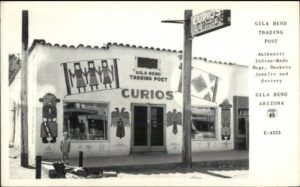
Most noteworthy, vintage Indian jewelry is a great way to own a small piece of American history. Consequently, it has special appeal which sets it apart from the beautiful new Indian jewelry of today.
Vintage jewelry is desirable for the more traditional construction techniques. Dark silver patina may be an indication that the jewelry is vintage!

During this era, Native American Indians made jewelry mainly for their own use. Also, they made it to trade with other Native American Indian tribes. Especially relevant, our vintage jewelry sold through Vintage Indian Jewelry dates from the 1930s to 1970s. Notably, some of our pieces are even older!

After 1960, it was a common practice for Native American silversmiths to start to sign their jewelry pieces. As a result, most earlier pieces rarely have a signature or hallmarks. Construction techniques can lend clues to the origin or artist. In the old days, stamps to adorn the silver are not readily available. As a result, artists made their own stamps from old iron files and tools. Additionally, turquoise pieces are cut, shaped, and drilled by hand. Notably, vintage jewelry may contain rare turquoise from closed mines. Equally important, silver for old jewelry sometimes comes from melting down coins.

Most of our vintage jewelry comes from private collections. Leaving the patina on Indian jewelry is a good thing. Polishing silver on vintage pieces with patina can diminish the value and desirability. Polishing takes away evidence of age, the natural patina which built up over years of use.

Maisel’s jewelry is traditionally for sale at curio shops and trading posts along Route 66. Similarly, railroad tourists and highway motorist are targets for these old west trinkets. Finally, to view some of the nostalgic merchant establishments of this jewelry, click HERE.
please visit our main on-line store… Tucson Indian Jewelry!
Vintage Indian Jewelry 1990 – 2025 © Schannep Ventures L.L.C. ALL RIGHTS RESERVED


 To purchase Vintage Indian Jewelry visit
To purchase Vintage Indian Jewelry visit